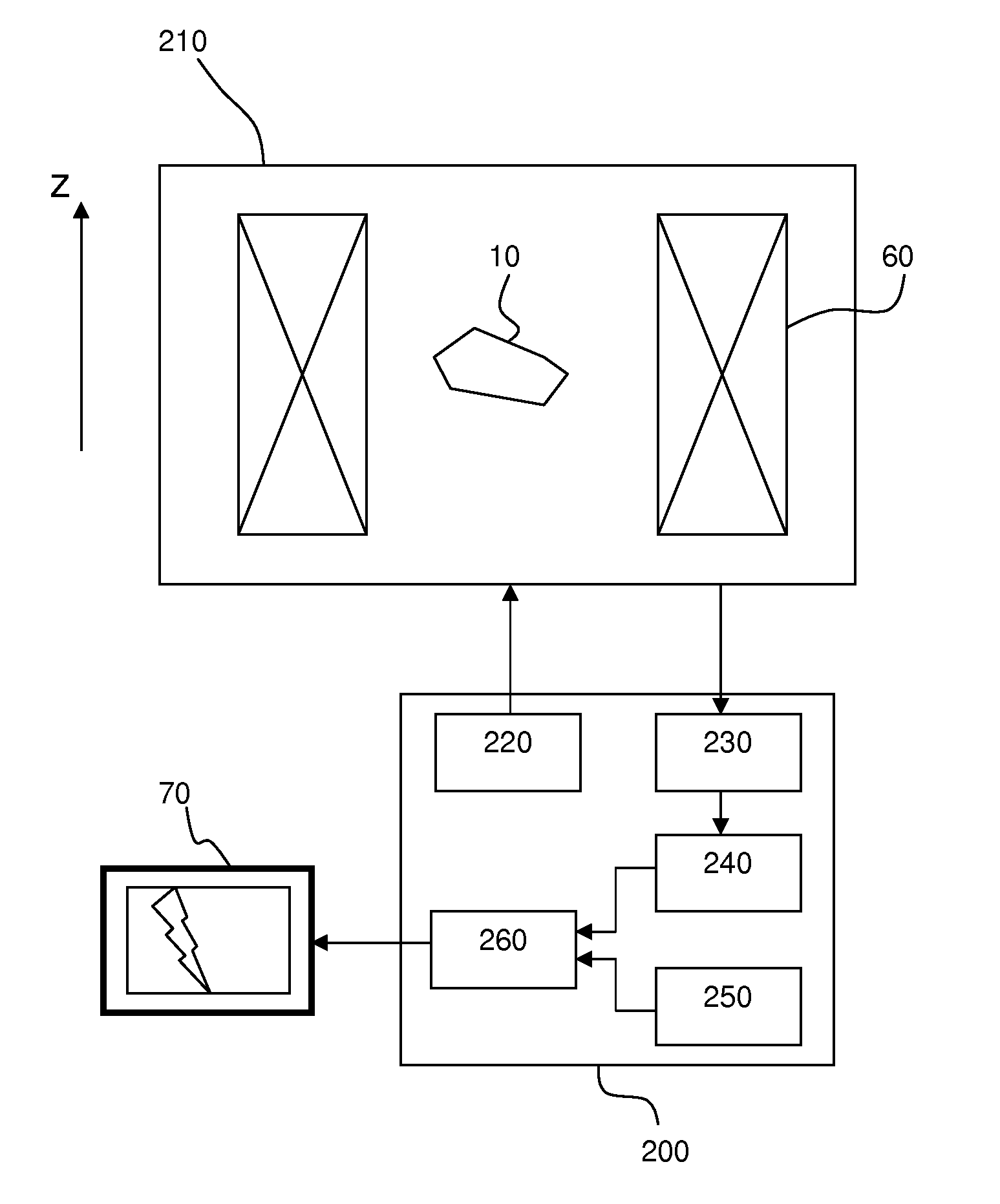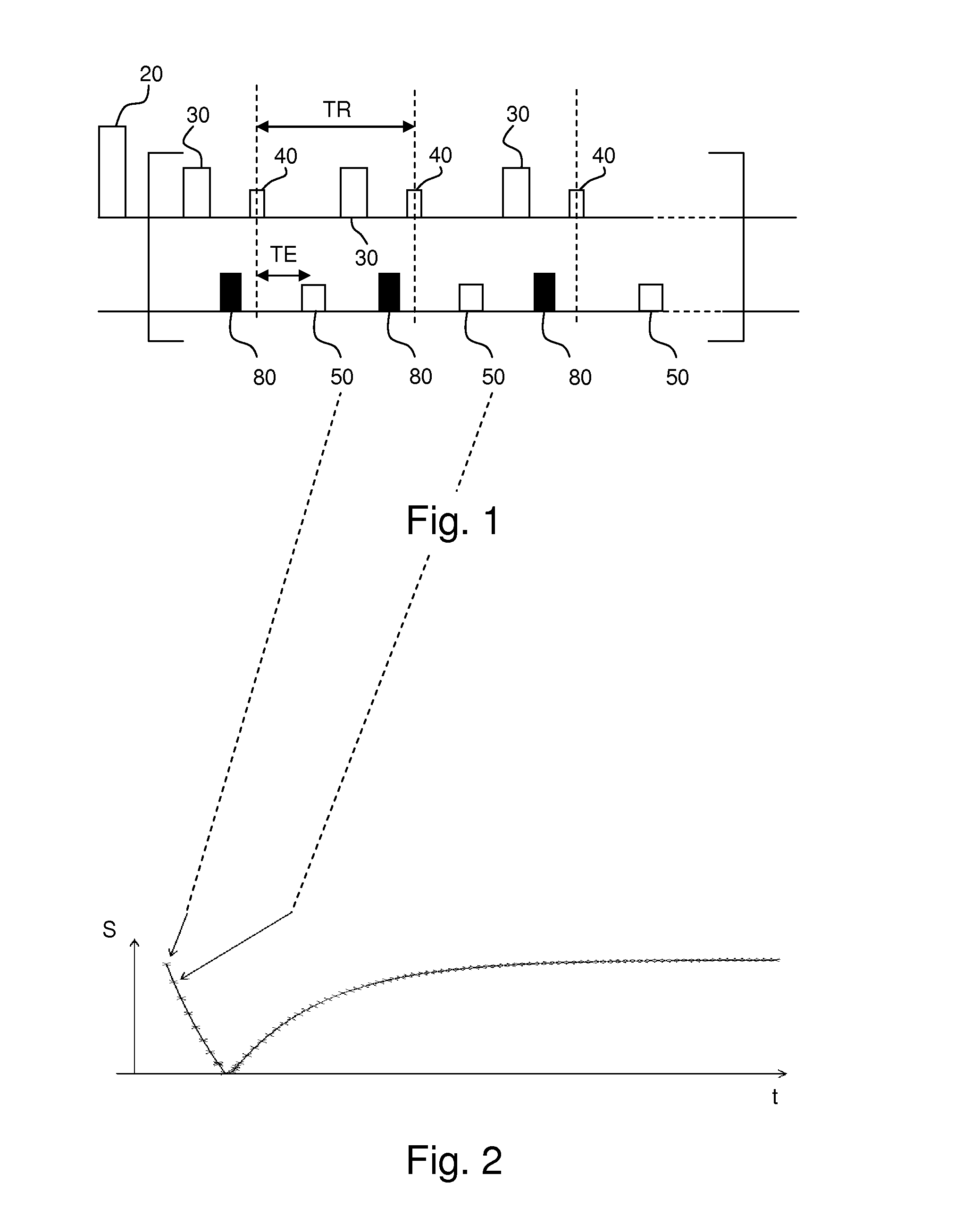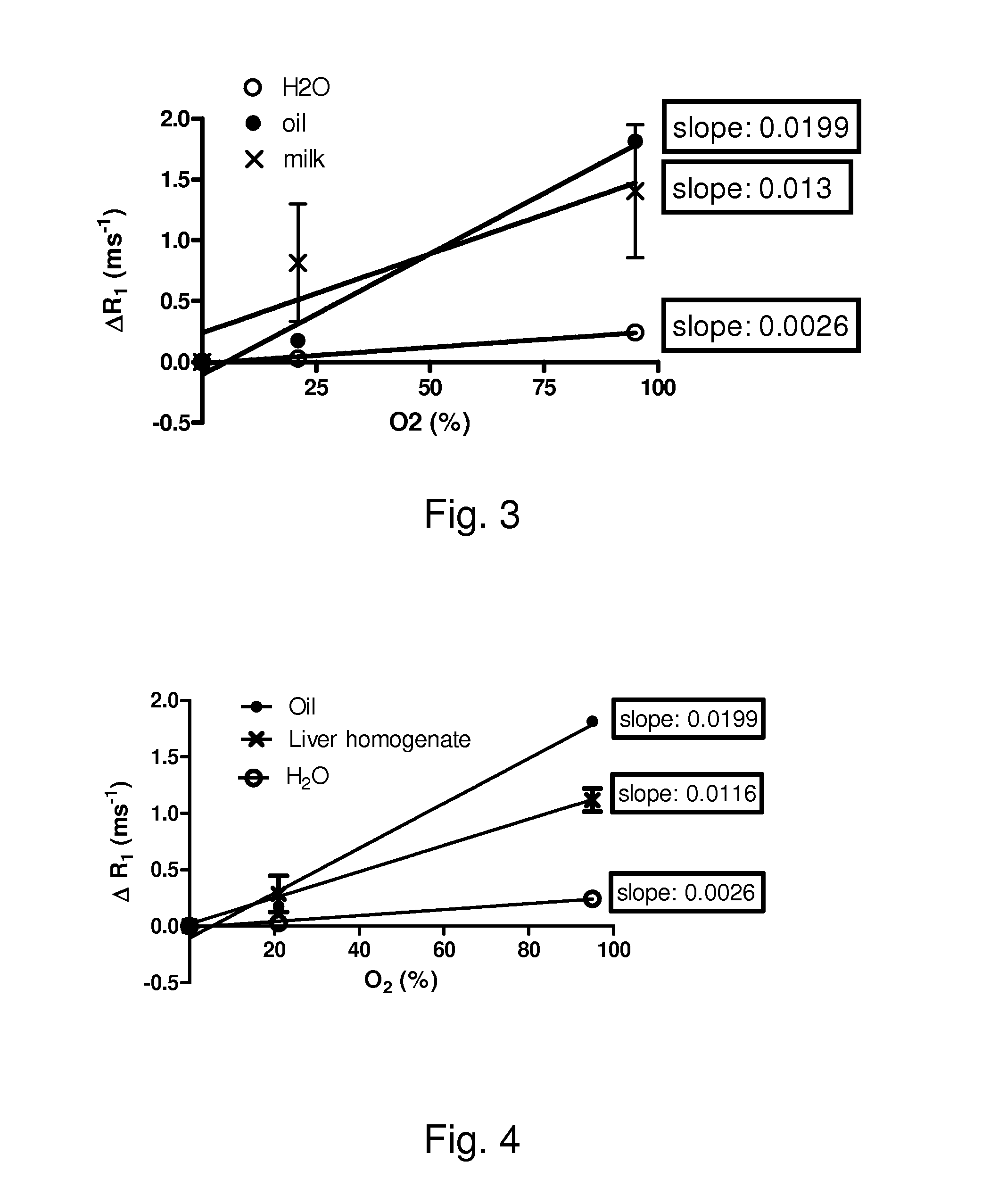In vivo quantification of a variation of oxygenation in a tissue by using a magnetic resonance imaging technique
a magnetic resonance imaging and tissue oxygenation technology, applied in the field of in vivo method for quantifying can solve the problems of lack of sensitivity of the technique proposed by j p b o'connor, inability to use the method to quantify the variation of oxygenation in the tissue,
- Summary
- Abstract
- Description
- Claims
- Application Information
AI Technical Summary
Benefits of technology
Problems solved by technology
Method used
Image
Examples
Embodiment Construction
[0038]In vivo MRI techniques are well known by the one skilled in the art. In MRI, a static magnetic induction B0 is first applied to a tissue 10 to be studied. This static magnetic induction is preferably applied by a superconducting magnet 60 and is typically strong: B0 typically has a value larger than 1 T. Here, we assume that this static magnetic induction B0 is applied along a z-axis. Following the application of this static magnetic induction B0, an equilibrium state takes place and, as a first approximation, one can consider that a macroscopic magnetization {right arrow over (M)} is induced along the z-axis in the studied tissue 10 which means M={right arrow over (M)}=M0{right arrow over (z)}. Then, a sequence of radio-frequency (RF) pulses is typically applied to modify this equilibrium state. This equilibrium state is disturbed via transmission of photons with appropriate energy (resonance phenomena). For a proton of energy E=ω0, a resonance condition is described by a La...
PUM
 Login to View More
Login to View More Abstract
Description
Claims
Application Information
 Login to View More
Login to View More - R&D
- Intellectual Property
- Life Sciences
- Materials
- Tech Scout
- Unparalleled Data Quality
- Higher Quality Content
- 60% Fewer Hallucinations
Browse by: Latest US Patents, China's latest patents, Technical Efficacy Thesaurus, Application Domain, Technology Topic, Popular Technical Reports.
© 2025 PatSnap. All rights reserved.Legal|Privacy policy|Modern Slavery Act Transparency Statement|Sitemap|About US| Contact US: help@patsnap.com



